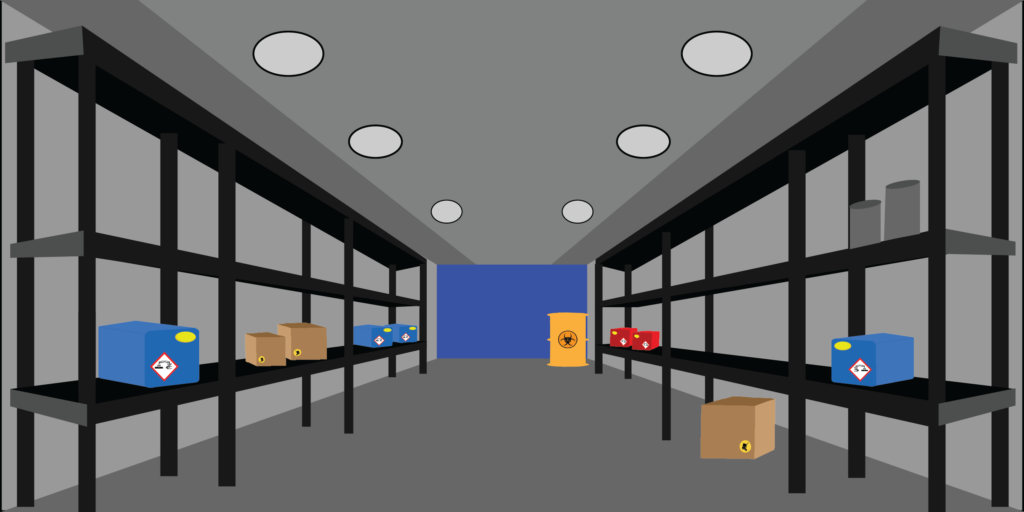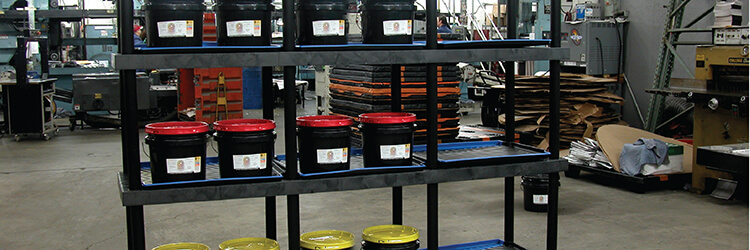Organizing a Chemical Closet

What does your chemical storage solution look like? Storing chemicals off the ground and utilizing heavy-duty shelving such as DuraShelf®, adds a level of organization, efficiency, and ensures employee safety. However, shelving alone is often not enough to achieve these things. Let’s take a look at three strategies for organizing a chemical closet effectively.

Take Inventory of Product
The first step to properly organizing is to know what type of chemicals you have on your shelves. Determine how often each product is used, how much of each product you may need on hand per month/year, and the average shelf life of the product. Once you have calculated this, you can better determine where to place products and how much storage space is needed.
PRO TIP: Keep items at arm’s reach to reduce the risk of injury caused by bending over or lifting up large items. Consider putting your least used products on higher shelves and frequently used products on middle shelves. Place heavy or hard to move items on mid to lower shelves.

Group Compatible Hazard Families
It’s important to clearly label all of your chemical bottles in accordance with OSHA guidelines. However, you can take this one step further by grouping chemicals by their hazard type and a color-coding system in accordance with the OSHA recommendations for chemical storage. Each color provides a warning of a particular hazard or gives information or directions. Learn more about what each color means in our post on color-coding and signs.

Prepare Shelving
When it comes to the storage of chemicals, the shelving you use needs to be secure and strong enough to hold chemicals being stored on them. Do not overload shelves. If you are worried about spillage or run-off, use our solid-top shelving units or containment trays. Position shelving to adhere to OSHA’s guidelines on chemical storage.
Download our PDF to learn more about our products for chemical containment.


